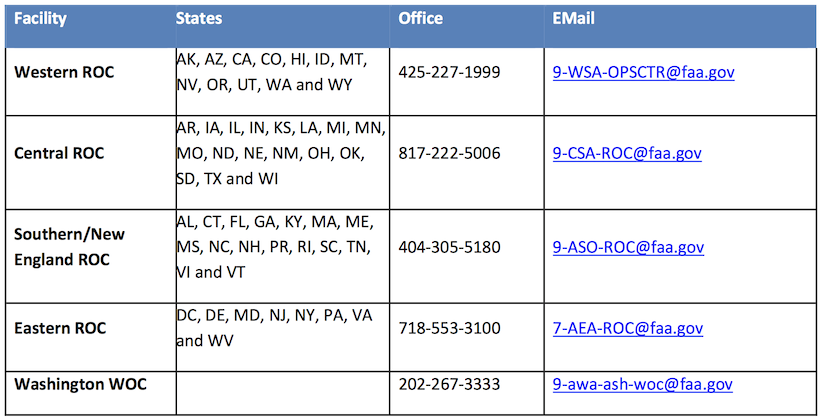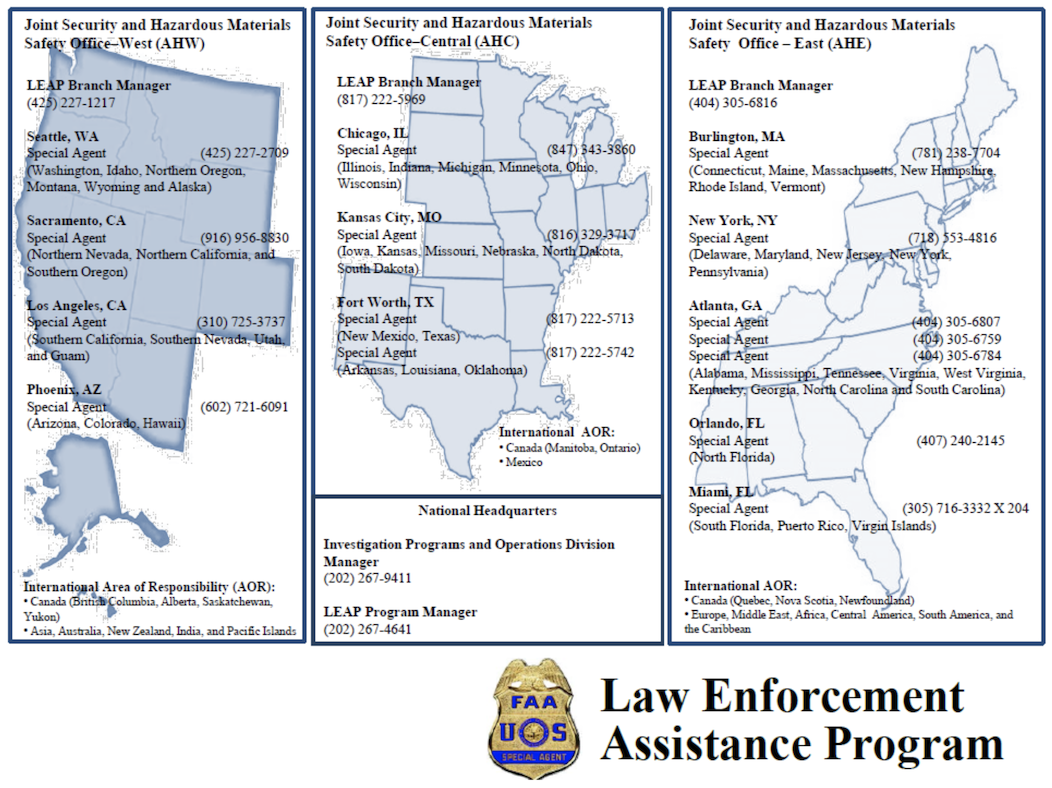Home
A comprehensive resource for safe and responsible laser use

FAA guidance for law enforcement
The following is from a March 2016 U.S. Federal Aviation Administration document for state and local law enforcement agencies. To make it easier to read, LaserPointerSafety.com has boldfaced key passages and has added more paragraph breaks.
The document is online at FAA’s website here; in case it has moved or is unavailable, here is a copy of the document as of July 2017.
Law Enforcement Guidance for Identifying and Reporting Unauthorized Laser Illumination Incidents Against Aircraft
The FAA is aware of an increasing number of unauthorized laser illumination incidents nationwide. Shining a laser at an aircraft is a Federal crime that the U.S. vigorously pursues. Lasers distract pilots from their safety duties and can lead to temporary blindness during critical phases of flight, such as takeoff and landing. In some cases in the past, pilots have reported eye injuries that required medical treatment.
The FAA retains the responsibility for enforcing Federal Aviation Regulations, including those applicable to laser illumination incidents. The agency recognizes though that State and local Law Enforcement Agencies (LEA) are often in the best position to deter, detect, immediately investigate,1 and, as appropriate,2 pursue enforcement actions to stop unauthorized laser strikes. The information provided below is intended to support the partnership between the FAA and LEAs in addressing these activities.
Background: On February 14, 2012, the President signed Public Law 112-95, the FAA Modernization and Reform Act of 2012. Section 311 amended Title 18 of the United States Code (18 U.S.C.), Chapter 2, § 39, by adding § 39A, which makes it a Federal crime to aim a laser pointer at an aircraft. The crime is punishable by a fine up to $250,000 and five years’ imprisonment. The FAA received 3,894 laser incident reports for the 2014 calendar-year. If the current trend continues, we are on track to record in excess of 6,500 laser incidents in the 2015 calendar-year. [The actual number for 2015 ended up at 7,703.]
The Role of Law Enforcement: The FAA promotes voluntary compliance by educating individuals on the danger of lasers via public service announcements, media events and our public website. The FAA also addresses laser cases under a special emphasis enforcement program generally requiring the FAA to take legal enforcement action where the evidence supports a finding that an individual’s use of the laser interfered with a crewmember’s performance of duties. This authority is designed to protect users of the airspace as well as people and property on the ground.
However, as noted above, State and local Law Enforcement Agencies (LEA) are often in the best position to deter, detect, immediately investigate,3 and, as appropriate,4 pursue enforcement actions to stop unauthorized laser illuminations. Although the FAA retains the responsibility for enforcing its regulations, FAA aviation safety inspectors, who are the agency’s principal field elements responsible for following up on these unauthorized and/or unsafe activities, will often be unable to immediately travel to the location of an incident. Historically, individuals who shine lasers onto/into aircraft have not been identified due to the inability to locate the offenders. The overwhelming majority of laser strikes where offenders were identified involve illumination of police or media aircraft.
While the FAA must exercise caution not to mix criminal law enforcement with the FAA’s administrative safety enforcement function, the public interest is best served by coordination and fostering mutual understanding and cooperation between governmental entities with law enforcement responsibilities. Although there are Federal criminal statutes that may be implicated by unauthorized laser illumination (see 18 U.S.C. Chapter 2, § 39A), most violations of the FAA’s regulations may be addressed through administrative enforcement measures. As with any other civil or criminal adjudication, successful enforcement will depend on development of a complete and accurate factual report contemporaneous with the event.
Although certainly not an exhaustive list, law enforcement officials, first responders and others can provide invaluable assistance to the FAA by taking the actions outlined below:
- (1) Witness Identification and Interviews. Local law enforcement is in the best position to identify potential witnesses and conduct initial interviews, documenting what they observed while the event is still fresh in their minds. In addition, local law enforcement is in an optimum position to secure all information necessary for our safety inspectors to contact these witnesses in any subsequent FAA investigation. We are mindful that in many jurisdictions, state law may prohibit the transmission of witness statements to third parties, including the FAA. In those circumstances it is extremely important that the FAA be able to locate and conduct independent interviews of these individuals.
- (2) Identification of Offenders. Law enforcement is in the best position to contact the suspected individuals illuminating aircraft from the ground. In our enforcement proceedings, we bear the burden of proof, which includes identifying who actually shined the laser beam in a manner that interfered with the performance of a crewmember’s duties aboard an aircraft being operated. Identification and interview of suspected offenders early on will help immeasurably to advance enforcement efforts.
- (3) Viewing and Recording the Location of the Event. Pictures taken in close proximity to the event are often helpful in describing light, position and weather conditions.
- (4) Notification. Immediate notification of an incident, or other suspected violation to one of the FAA Regional Operation Centers (ROC) located around the country is valuable to the timely initiation of the FAA’s investigation. These centers are manned 24 hours a day, 7 days a week with personnel who are trained in how to contact appropriate duty personnel during non-business hours when there has been an incident, accident or other matter that requires timely response by FAA employees. A list of these centers and telephone numbers is included as Attachment 1 to this letter. Follow-up with the FAA Law Enforcement Assistance Program Special Agent assigned geographic responsibility for your area (Attachment 2) will also help to ensure identifying information is acted upon swiftly.
- (5) Evidence Collection. Identifying and preserving any public or private security systems that may provide photographic or other visual evidence of laser illuminations, including video or still picture security systems can provide essential evidence to the FAA. Many times these systems do not permanently store information but erase it as the system recycles at a given interval. Local law enforcement is in the best position to inquire and make initial requests to identify and preserve this form of evidence or obtain legal process for securing this evidence in the context of an investigation of a possible violation of state criminal law.
- (6) Public Education. Law enforcement agencies routinely participate in community outreach activities. These activities, particularly those involving adolescents and young adults, provide unique opportunities to educate our youth on the dangers of shining lasers into the sky as well as the potential civil and criminal penalties associated with such action.
Virtually all of the items listed above are already in the tool box for law enforcement officers. Some law enforcement processes, such as arrest and detention or non-consensual searches almost always fall outside of the allowable methods to pursue administrative enforcement actions by the FAA unless they are truly a by-product of a state criminal investigation. We do not mean to discourage use of these methods and procedures where there is an independent basis for them under state or local law.
We simply wish to emphasize that work products intended for FAA use generally should involve conventional administrative measures such as witness interviews, “stop and talk” sessions with suspected violators, consensual examination of vehicles and equipment, and other methods that do not involve court orders or the potential use of force by law enforcement personnel.
It is extremely difficult to provide a “one size fits all” guide to cooperative investigation of unauthorized laser illumination of aircraft considering the myriad jurisdictions and the associated statutory and constitutional restraints and requirements. State and local officials are always urged to use their governmental unit’s legal resources and their own management chain to develop acceptable protocols for dealing with these instances.
In some situations, there may be legal bars to the sharing of some information or the use of databases designed for conventional law enforcement. However, with appropriate data collection during first responses and early reporting to the FAA, Federal, State and local agencies will be in the best position to educate the public and both collect and share information that may be of interest to each jurisdiction. FAA aviation safety inspectors are adept at coordination with our own legal resources to ensure that offenders are properly accountable for the potential risk they create to both people and property.
Originally published 3/9/2016
Footnotes
1 At least in terms of initial contact with the suspected offender.
2 Applying any laws falling within the enforcement authority of the LEA in question.
3 At least in terms of initial contact with the suspected offender.
4 Applying any laws falling within the enforcement authority of the LEA in question.
Attachment 1

Attachment 2
